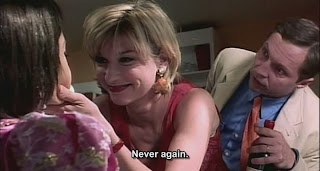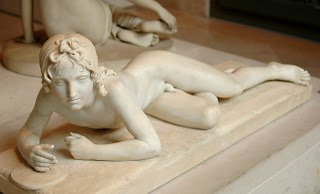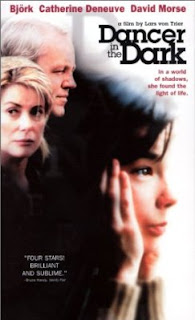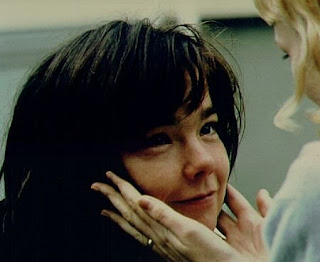 Alain Berliner's 1997 film Ma Vie En Rose tells the story of Ludovic Fabre, a little boy who identifies as a girl. Ludo wears his sister's old dresses, uses makeup and jewelry, plays with dolls, and watches Pam and Ben (Barbie and Ken type characters) on television. He is not homosexual per se, because he dreams of growing up to become a girl, and comes up with a word to describe his present state: he is a "boygirl." Michael R. Schiavi, in his article "A Girlboy's Own Story: Non-Masculine Narrativity in Ma Vie En Rose" describes Ludo as "an aggressively narrative resisting protagonist. Effeminate, cross-dressing, boy-loving, girl-identified, pre-pubescent male."
Alain Berliner's 1997 film Ma Vie En Rose tells the story of Ludovic Fabre, a little boy who identifies as a girl. Ludo wears his sister's old dresses, uses makeup and jewelry, plays with dolls, and watches Pam and Ben (Barbie and Ken type characters) on television. He is not homosexual per se, because he dreams of growing up to become a girl, and comes up with a word to describe his present state: he is a "boygirl." Michael R. Schiavi, in his article "A Girlboy's Own Story: Non-Masculine Narrativity in Ma Vie En Rose" describes Ludo as "an aggressively narrative resisting protagonist. Effeminate, cross-dressing, boy-loving, girl-identified, pre-pubescent male." Ludo is supposed to be seven, but actor Georges Du Fresne was 12 when the movie was shot.
Ludo is supposed to be seven, but actor Georges Du Fresne was 12 when the movie was shot.With his bobbed hair and frilly dresses, Georges is distinctly Natalie Portman-esque.

Throughout the film, there are subtle hints in the color of the wardrobe and sets as to how the characters in the scene relate to Ludo. Are they accepting or hostile? What is the significance of the color scheme in Ma Vie En Rose?
 Ludo's father Pierre wears a blue shirt at the party at the beginning of the film. He is quite flabbergasted and embarrassed by his son/daughter. Ludo's mother Hanna, on the other hand, is more composed and helps Ludo clean up. She wears a pink dress. A bit later in the film, when the children at school are doing show and tell, Ludo produces Pam and Ben dolls. The children all laugh, but the teacher, wearing a pinkish sweatshirt, is more understanding. On the playground, Jerome and Ludo have an encounter that can be best described as a flirtation. Jerome ignores a girl from the class who asks him to play with her. Jerome is wearing a pinkish jacket at the time. At dinner, after Jerome and Ludo are caught performing a mock wedding ceremony, Ludo's father is again embarrassed, and moreover, furious. Again Pierre is wearing blue. As the film progresses and Hanna's patience wears thin, she wears more blue dresses and sweaters. The list goes on.
Ludo's father Pierre wears a blue shirt at the party at the beginning of the film. He is quite flabbergasted and embarrassed by his son/daughter. Ludo's mother Hanna, on the other hand, is more composed and helps Ludo clean up. She wears a pink dress. A bit later in the film, when the children at school are doing show and tell, Ludo produces Pam and Ben dolls. The children all laugh, but the teacher, wearing a pinkish sweatshirt, is more understanding. On the playground, Jerome and Ludo have an encounter that can be best described as a flirtation. Jerome ignores a girl from the class who asks him to play with her. Jerome is wearing a pinkish jacket at the time. At dinner, after Jerome and Ludo are caught performing a mock wedding ceremony, Ludo's father is again embarrassed, and moreover, furious. Again Pierre is wearing blue. As the film progresses and Hanna's patience wears thin, she wears more blue dresses and sweaters. The list goes on. As an aside, in Ancient Greek mythology, art, and culture, boys who appeared girlish were considered beautiful. Then again, in most city-states of Ancient Greece, pederasty was considered normal...
As an aside, in Ancient Greek mythology, art, and culture, boys who appeared girlish were considered beautiful. Then again, in most city-states of Ancient Greece, pederasty was considered normal... Later in Michael Schiavi's article, he quotes Judith Butler, the American post-structuralist philosopher who has written on feminism and so-called queer theory. Butler assert that gender identity can be "reconceived as a personal/cultural history of received meanings subject to a set of imitative practices which refer laterally to other imitations and which, jointly, construct the illusion of a primary and interior gendered self." For all her erudite language, Butler is essentially saying that people imitate what their culture tells them is the normal behavior for their gender, to the point that they too consider it normal and identify themselves as society has instructed. Gender identity comes from without, yet is imitated so ardently that it finally appears, even to the imitator, as coming from within. What is the significance of this in the film? In regards to Ludo in Ma Vie En Rose, I think this can cut both ways.
Later in Michael Schiavi's article, he quotes Judith Butler, the American post-structuralist philosopher who has written on feminism and so-called queer theory. Butler assert that gender identity can be "reconceived as a personal/cultural history of received meanings subject to a set of imitative practices which refer laterally to other imitations and which, jointly, construct the illusion of a primary and interior gendered self." For all her erudite language, Butler is essentially saying that people imitate what their culture tells them is the normal behavior for their gender, to the point that they too consider it normal and identify themselves as society has instructed. Gender identity comes from without, yet is imitated so ardently that it finally appears, even to the imitator, as coming from within. What is the significance of this in the film? In regards to Ludo in Ma Vie En Rose, I think this can cut both ways.First, it is true that Ludo is pushed to act like a boy by his parents and
 fellow children. His parents even take him to see a child psychiatrist. Culture has dictated to its members what being a boy means, and Ludo's family tries to conform to that for fear of being ostracized by their neighbors and coworkers. Ludo idolizes Pam, an external source in the local media, who is the ultra-feminine fantasy figure on television, and he internalizes her world.
fellow children. His parents even take him to see a child psychiatrist. Culture has dictated to its members what being a boy means, and Ludo's family tries to conform to that for fear of being ostracized by their neighbors and coworkers. Ludo idolizes Pam, an external source in the local media, who is the ultra-feminine fantasy figure on television, and he internalizes her world.However, Ludo also watches his father, his brothers (who play with guns and exclaim that they have killed one another) and the other boys at school, yet does not identify with them. He attempts to emulate them with crude gestures and activities but fails. It is not in his nature. He is not pushed into a box by stereotypical gender roles as Butler would claim. Also, if people are simply imitating what society tells them, who started these concepts? Surely not everyone can imitate each other back to the beginning of time. Butler's theory ignores instinct as well. Who was the originator? The logic breaks down at this point.









